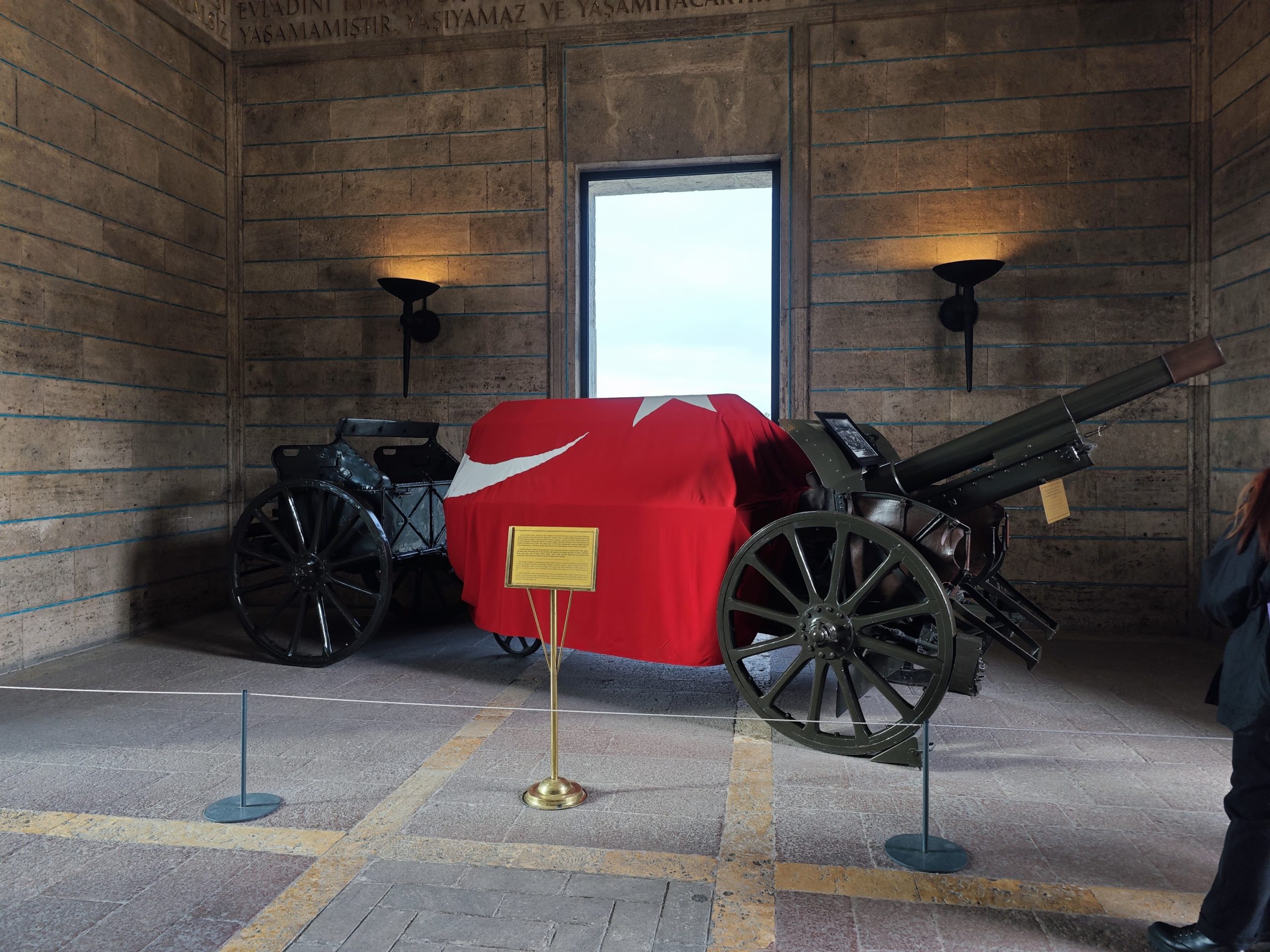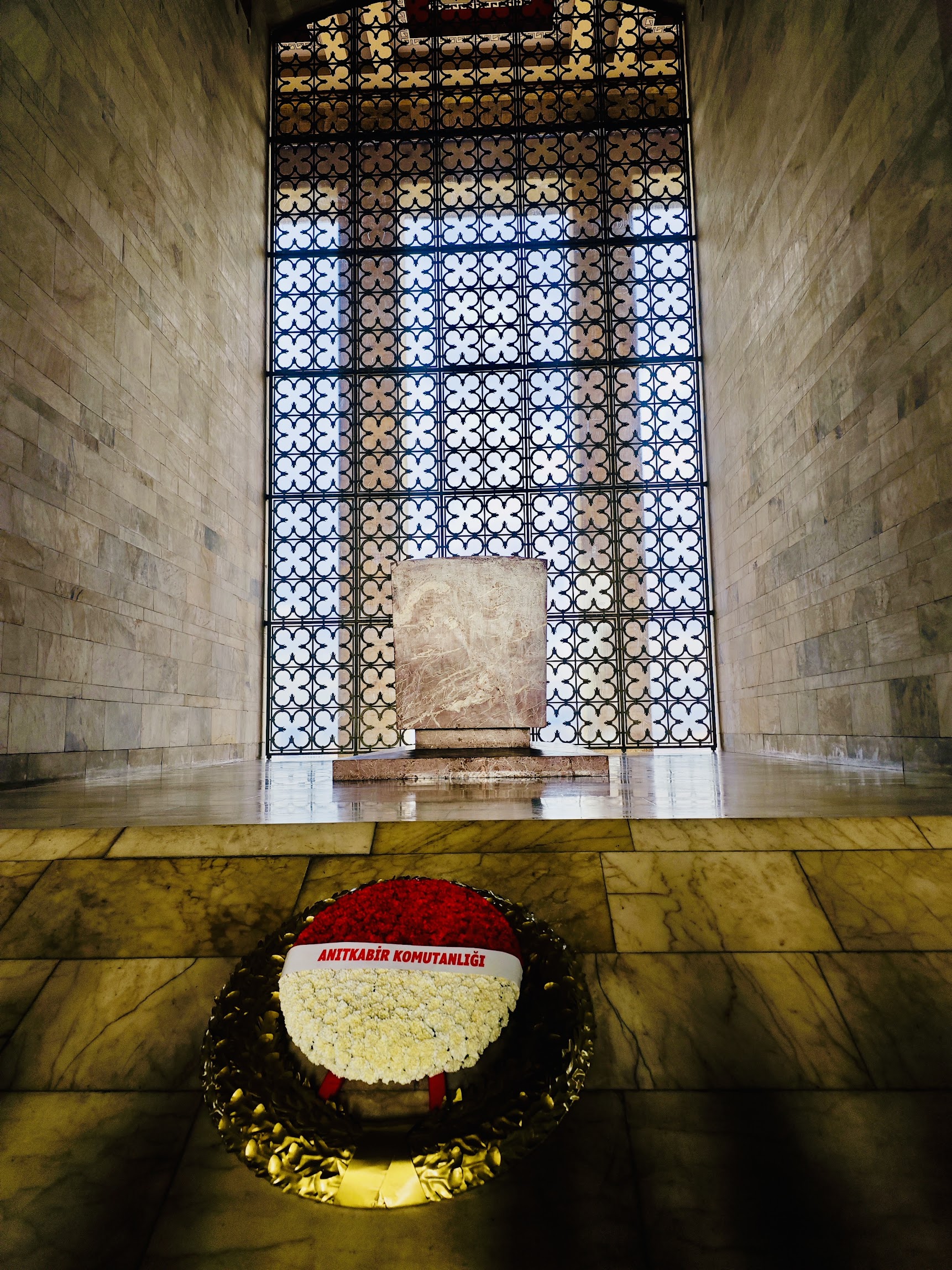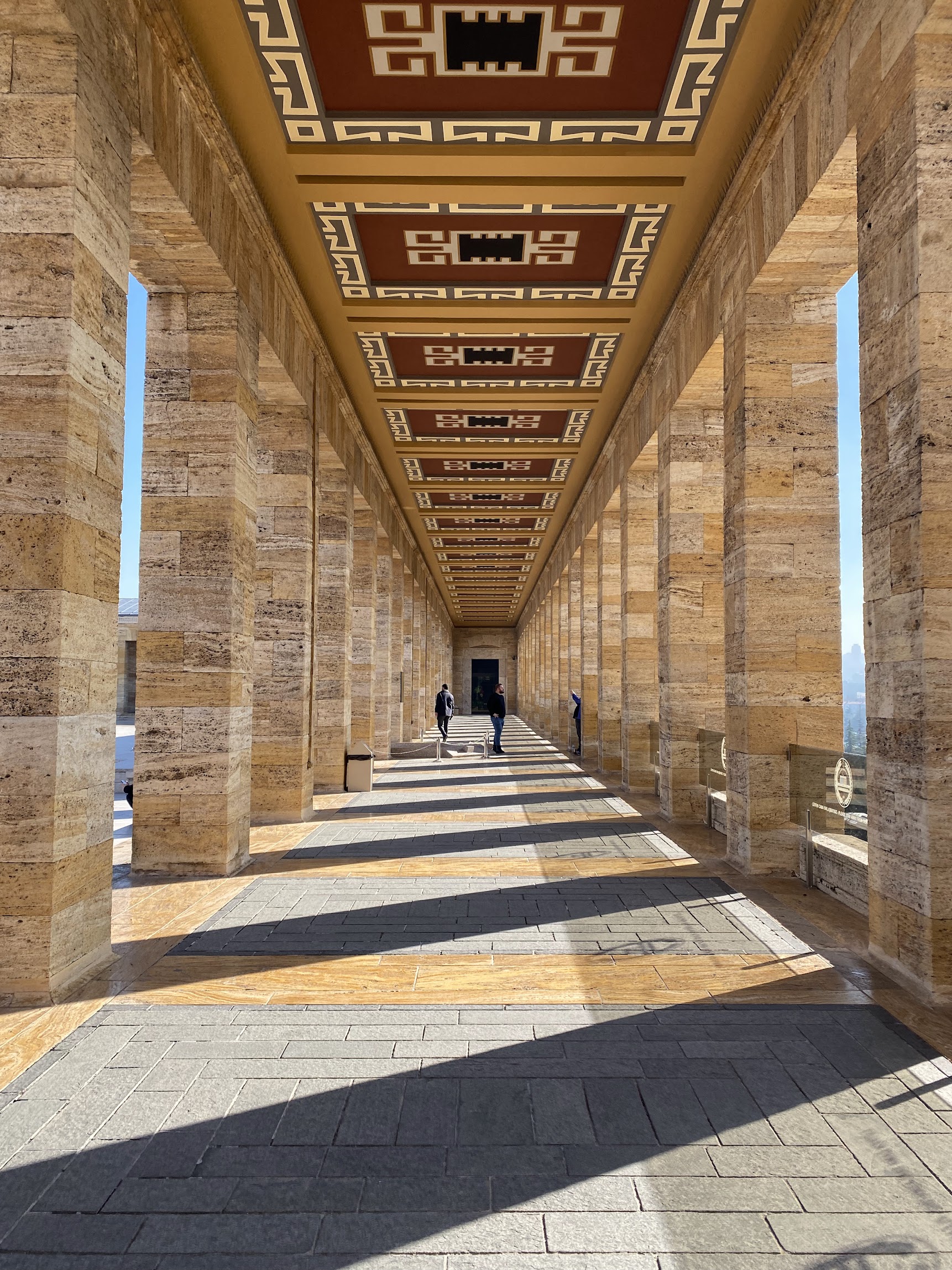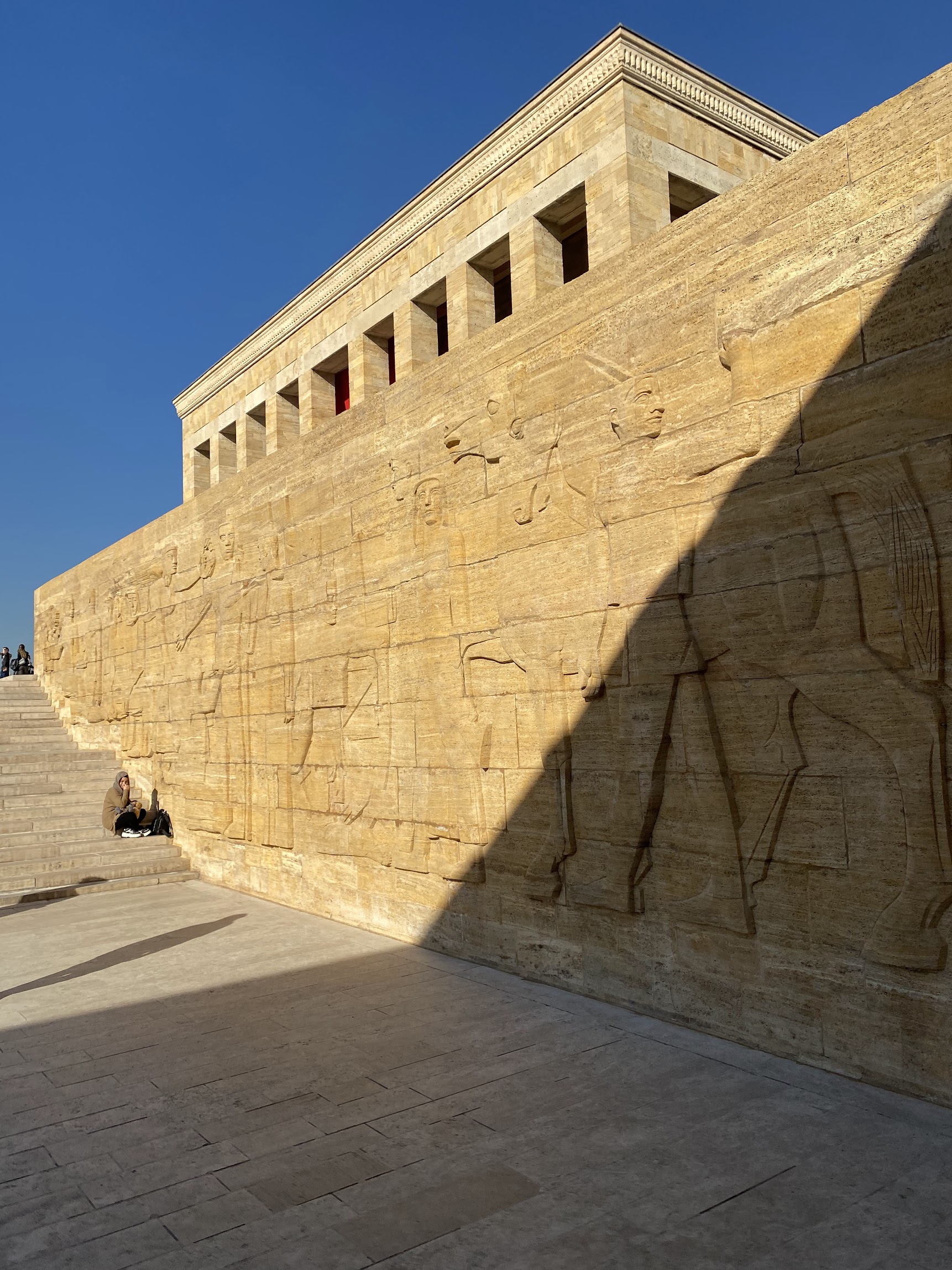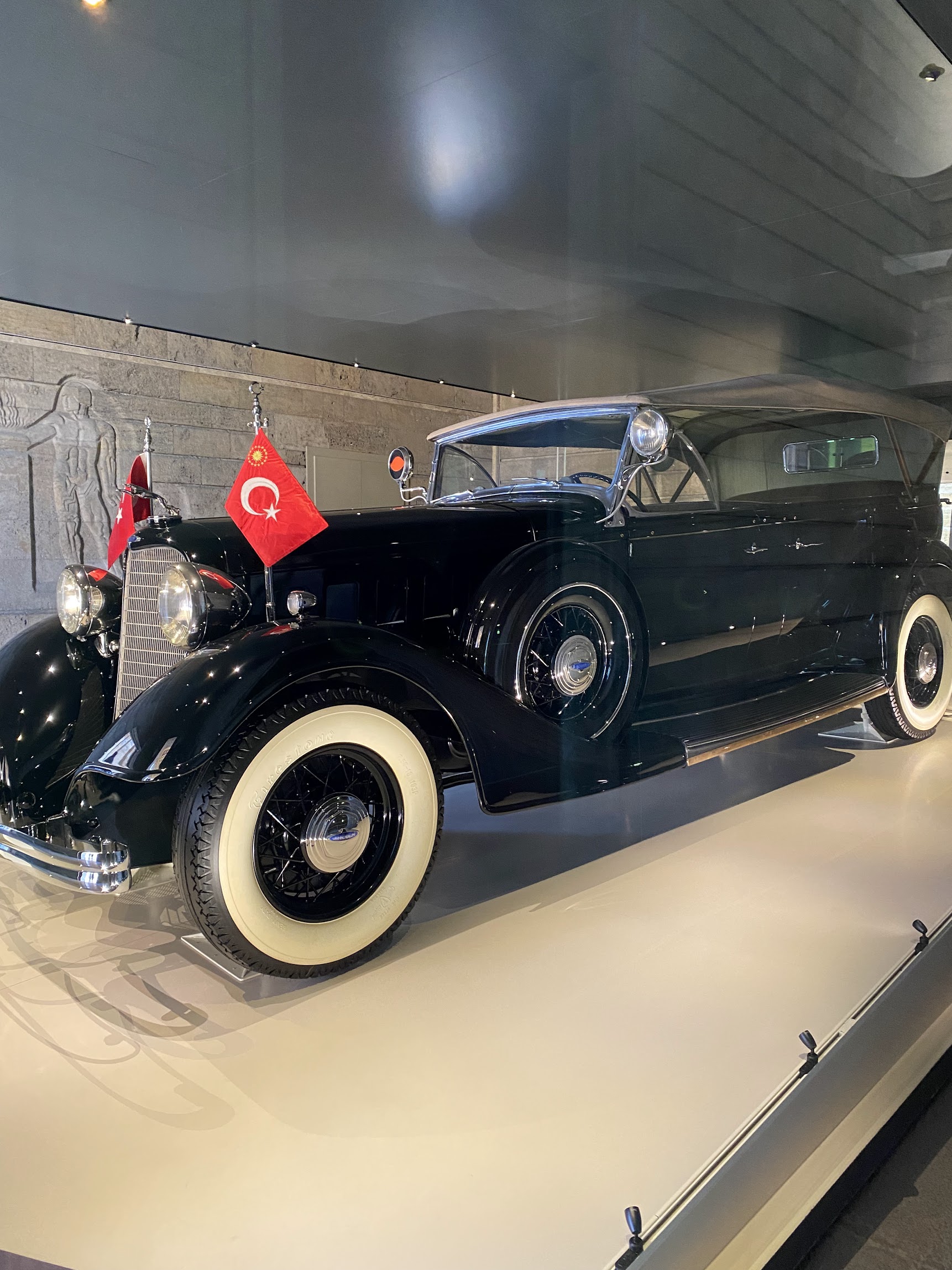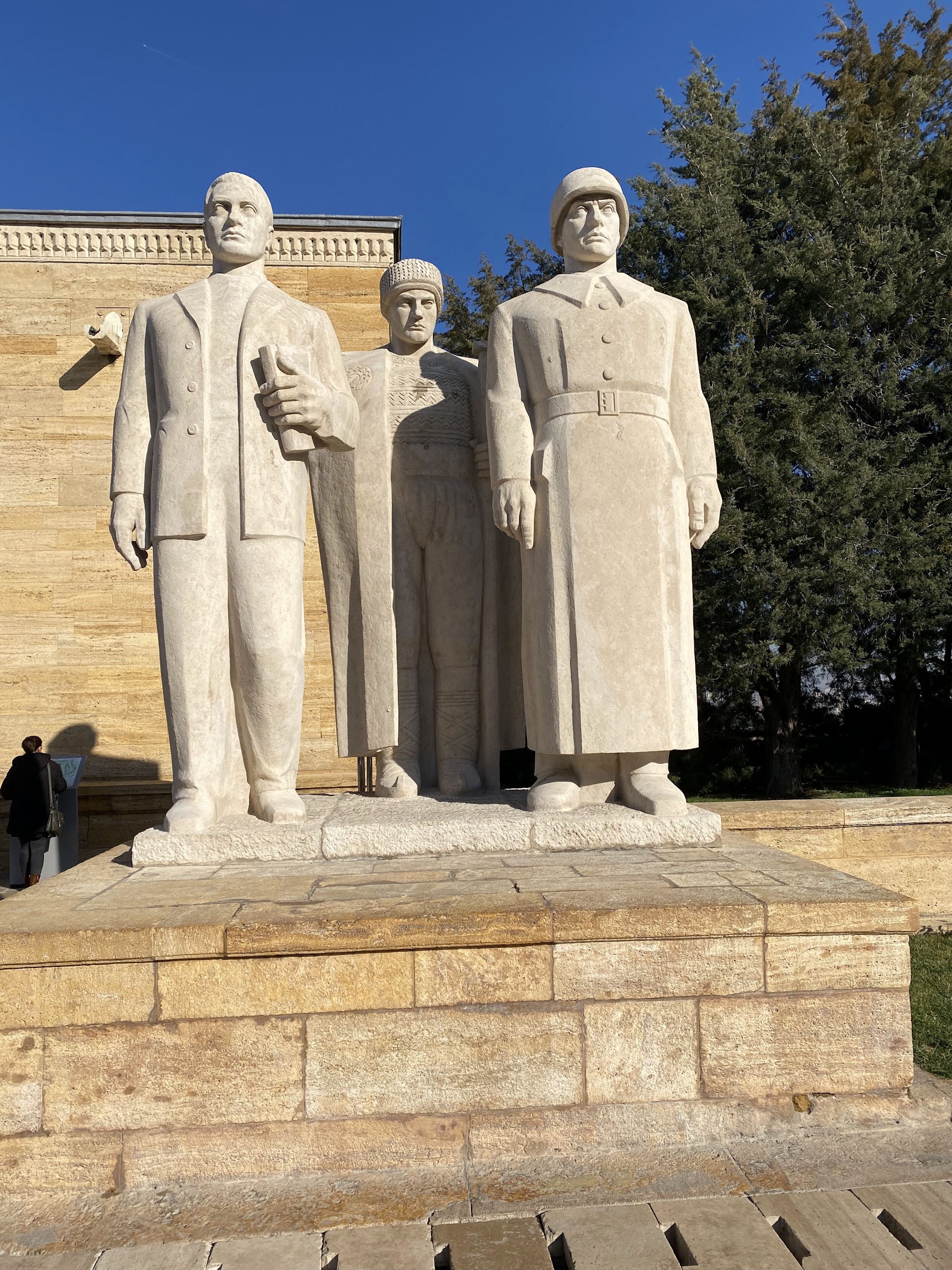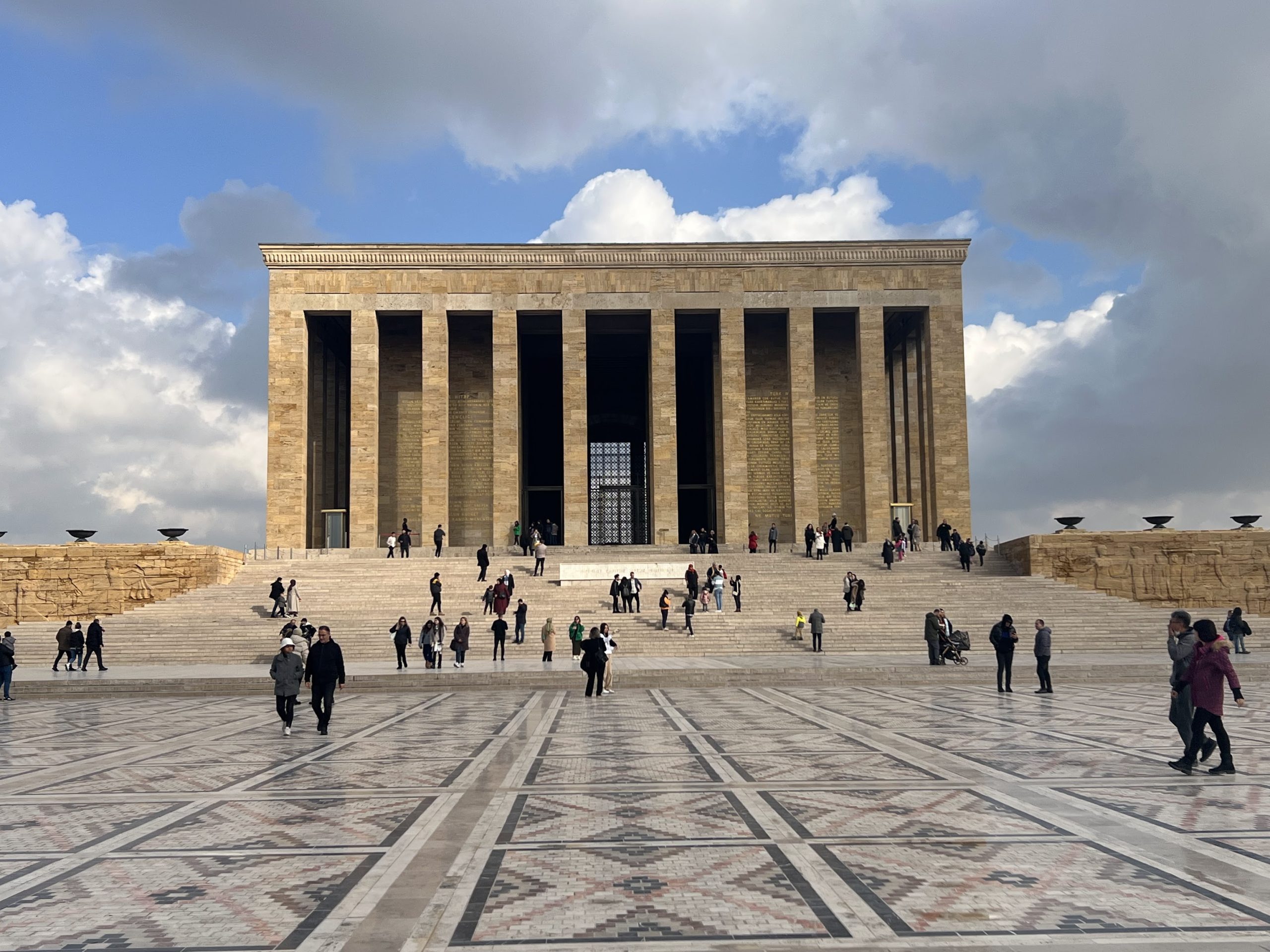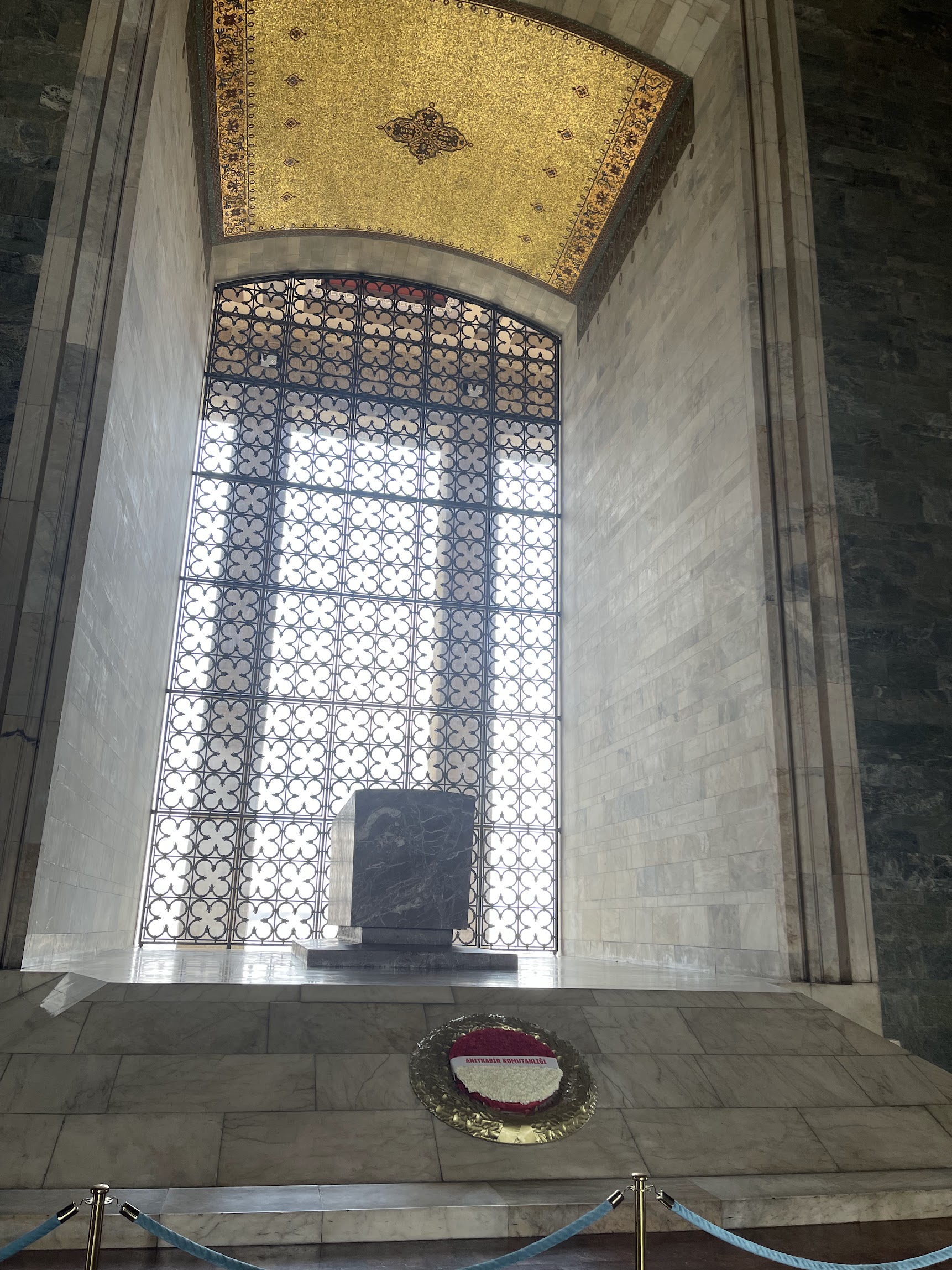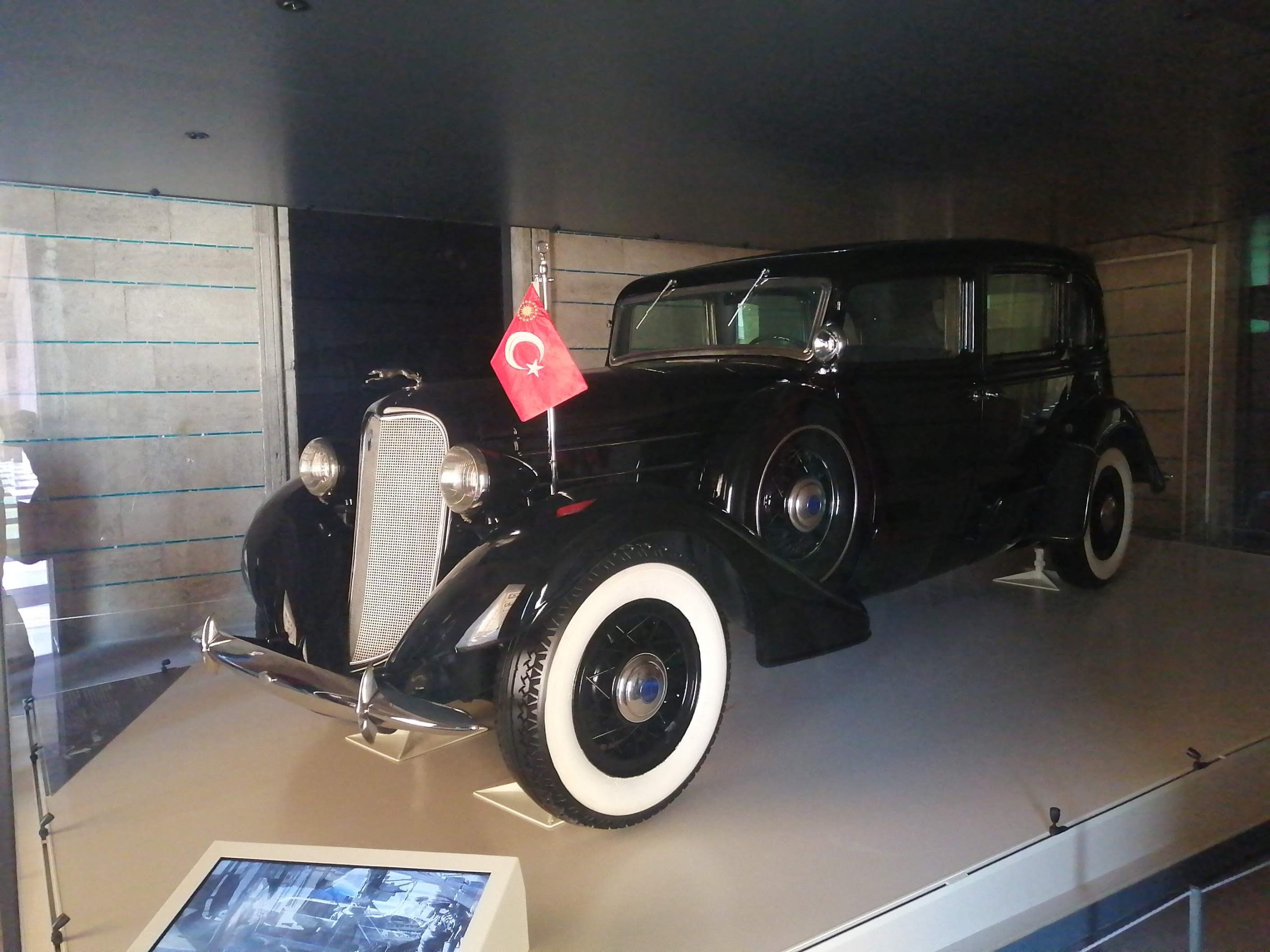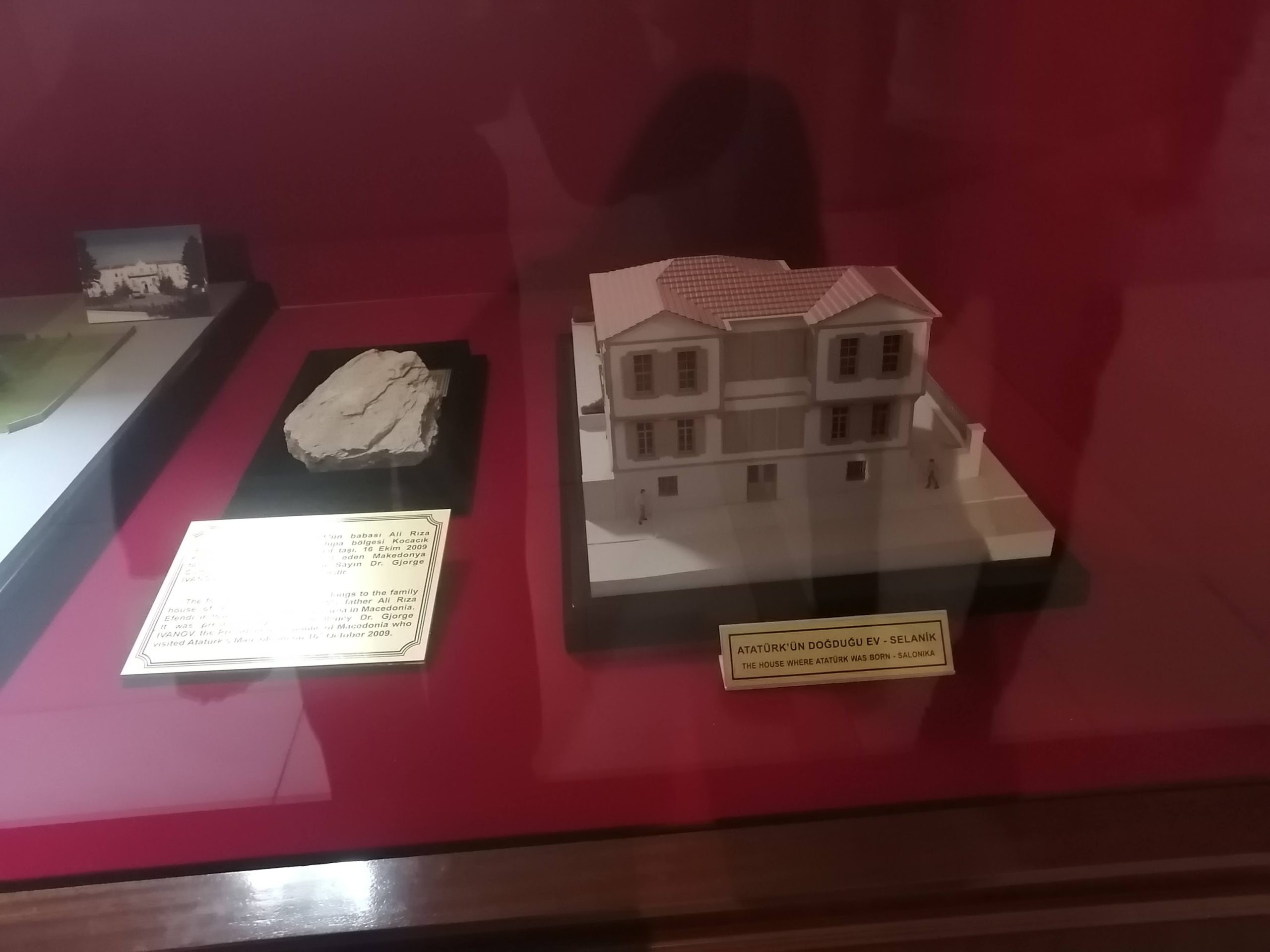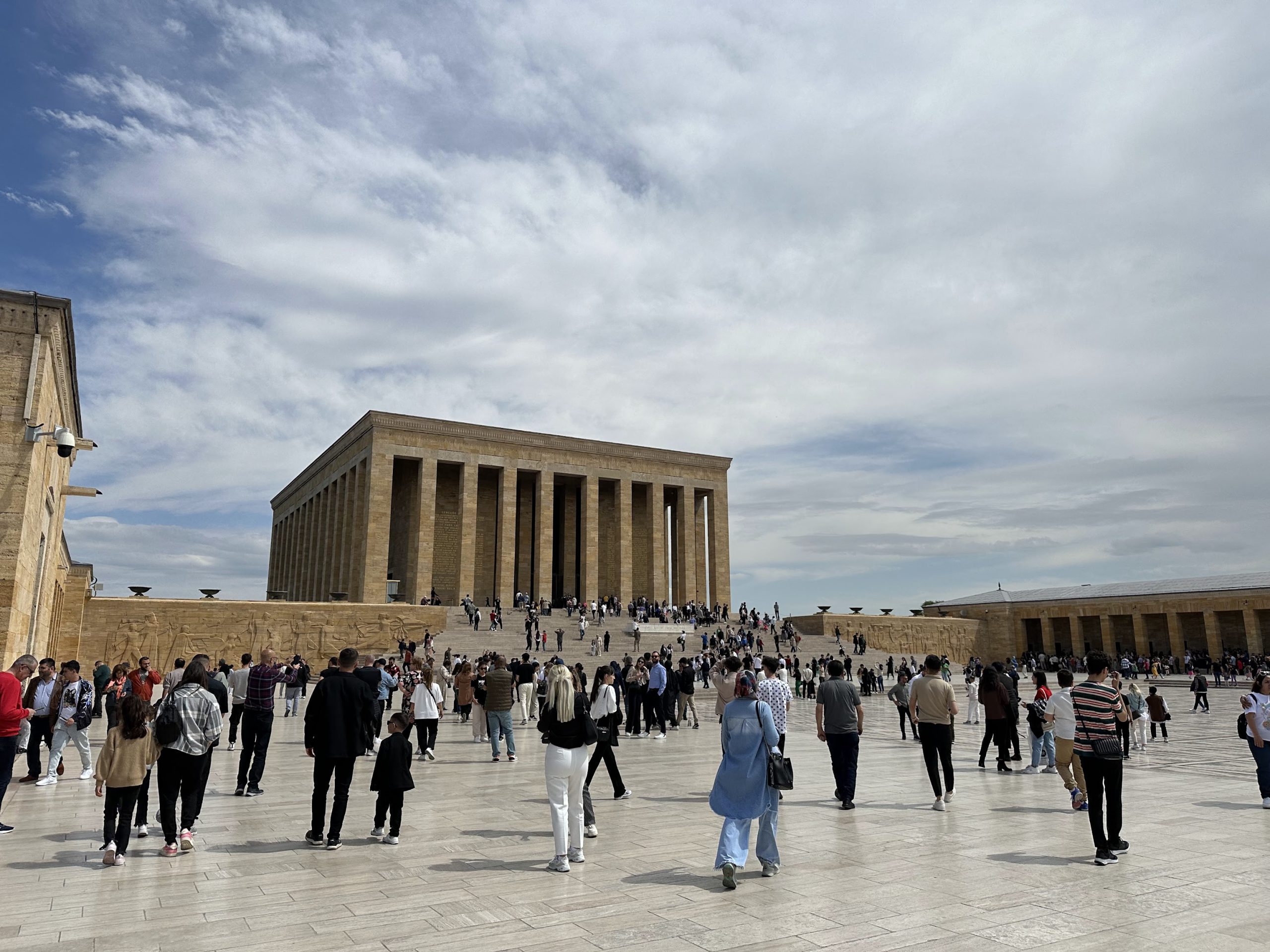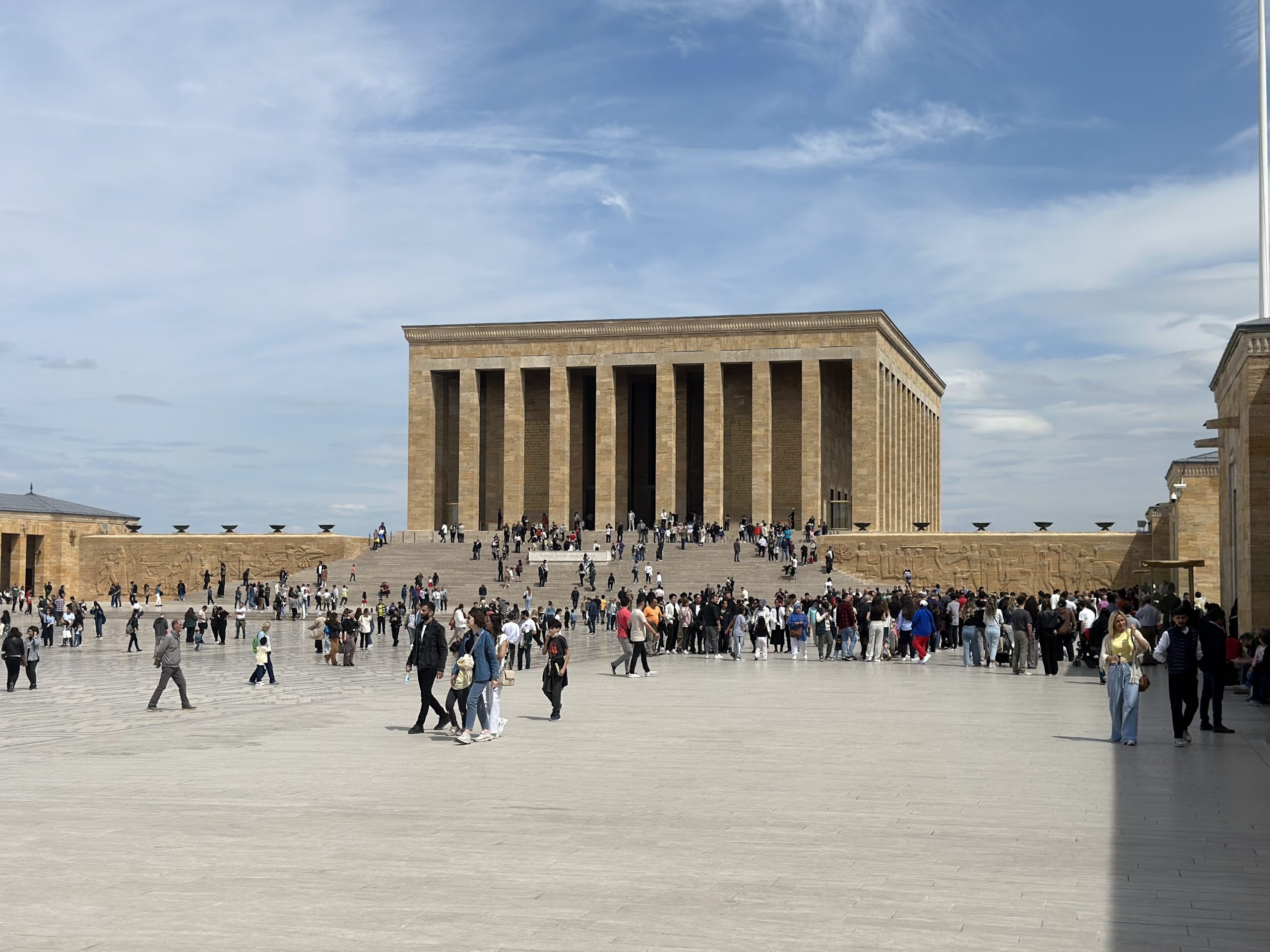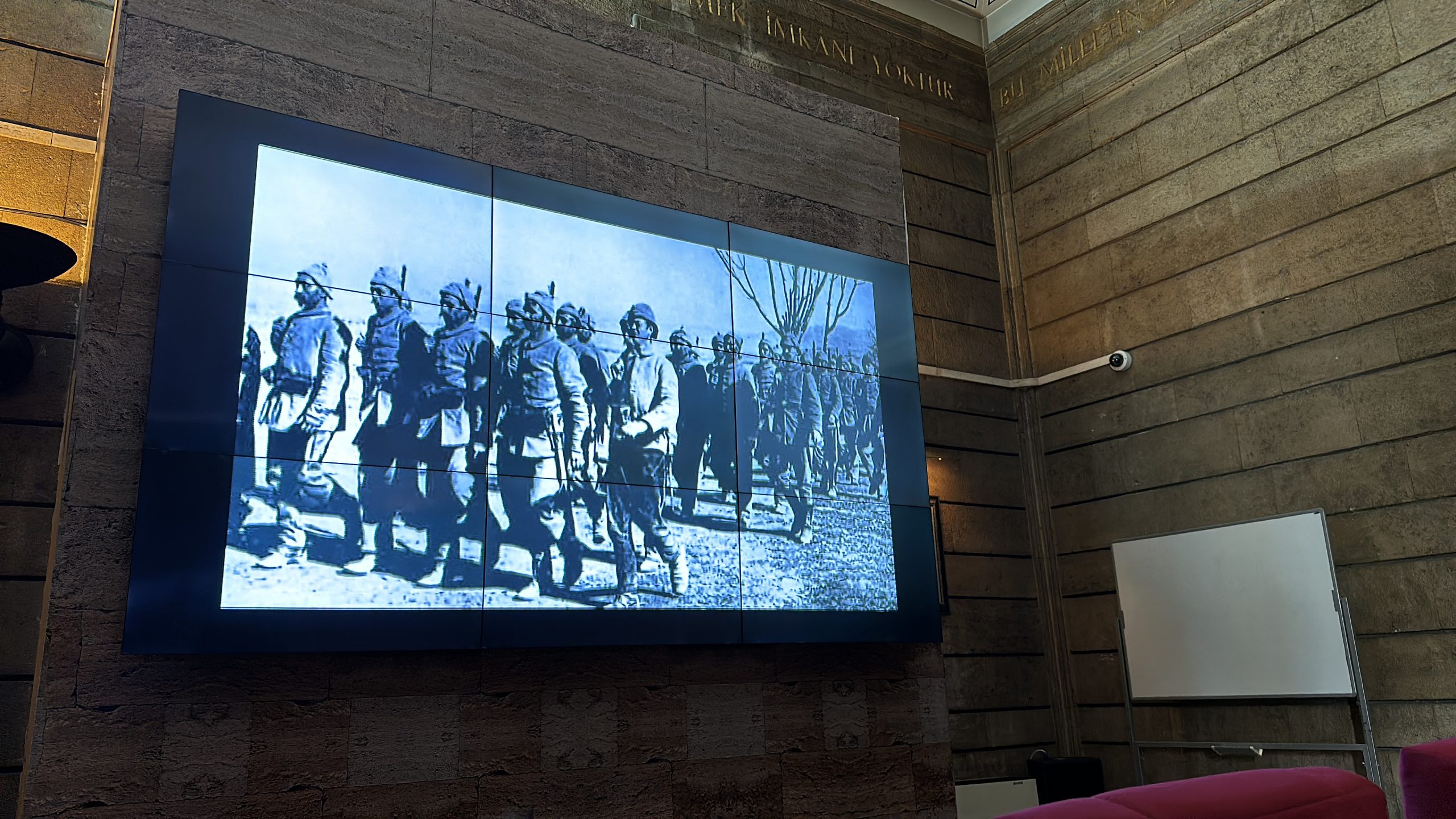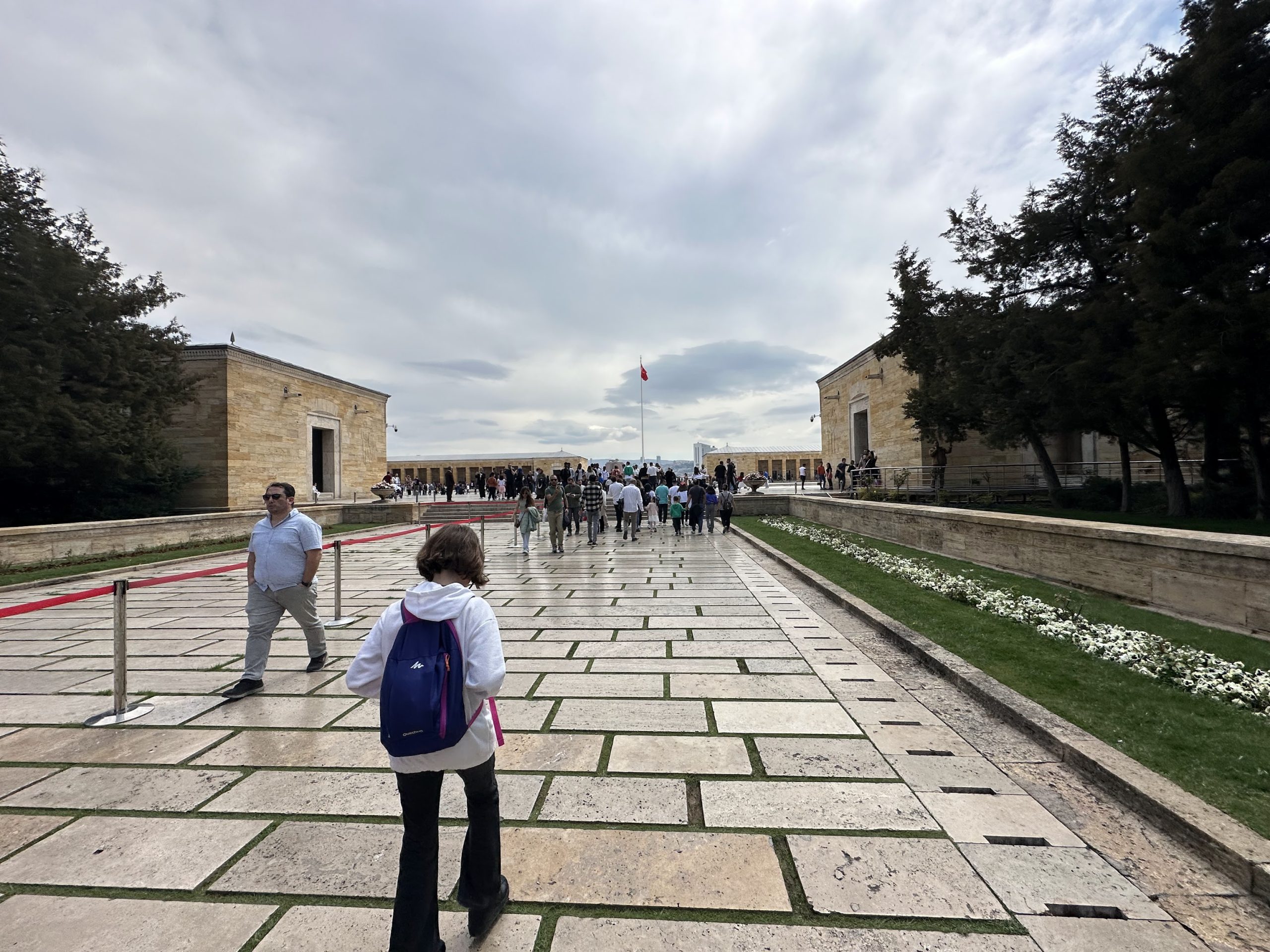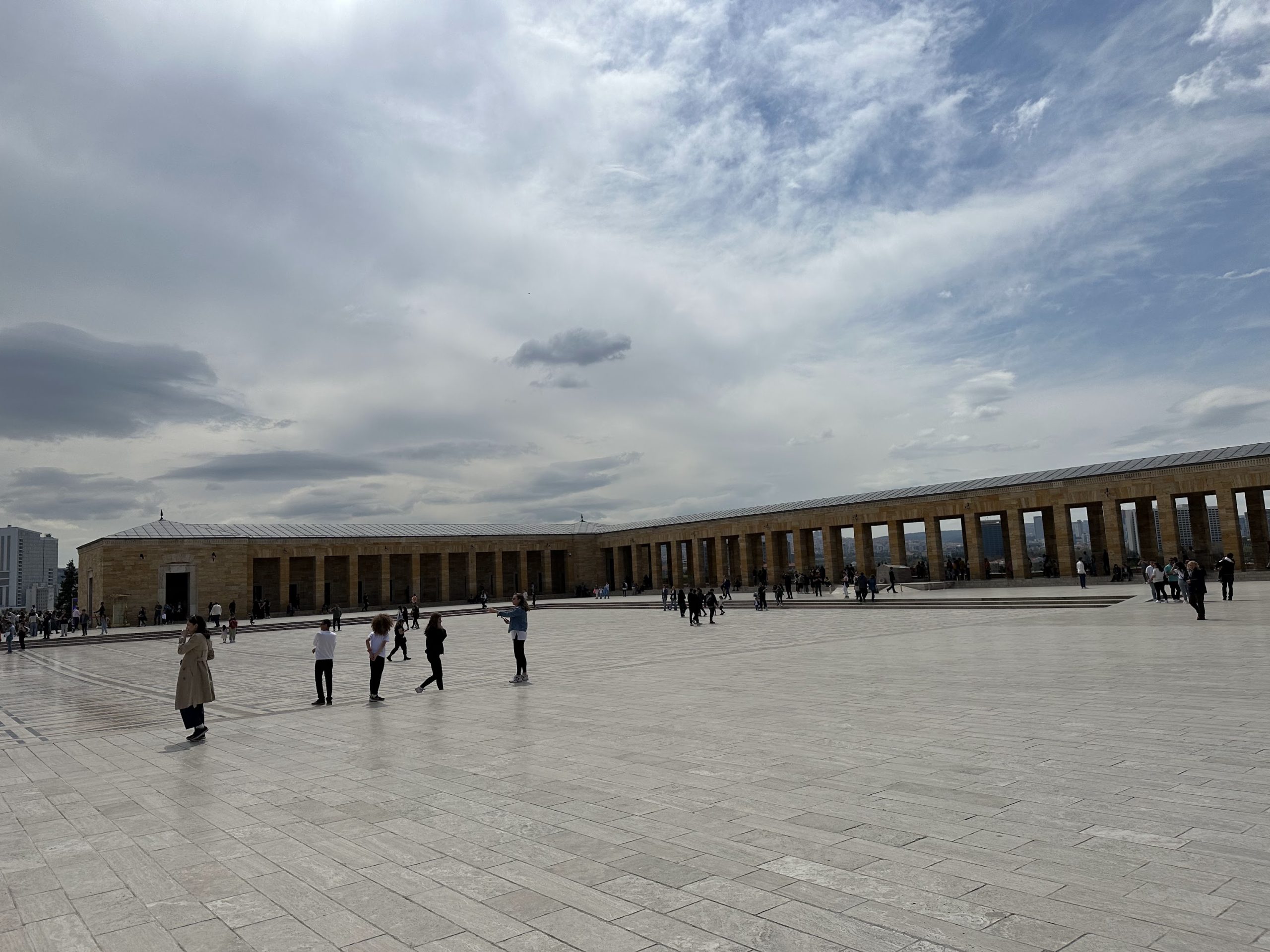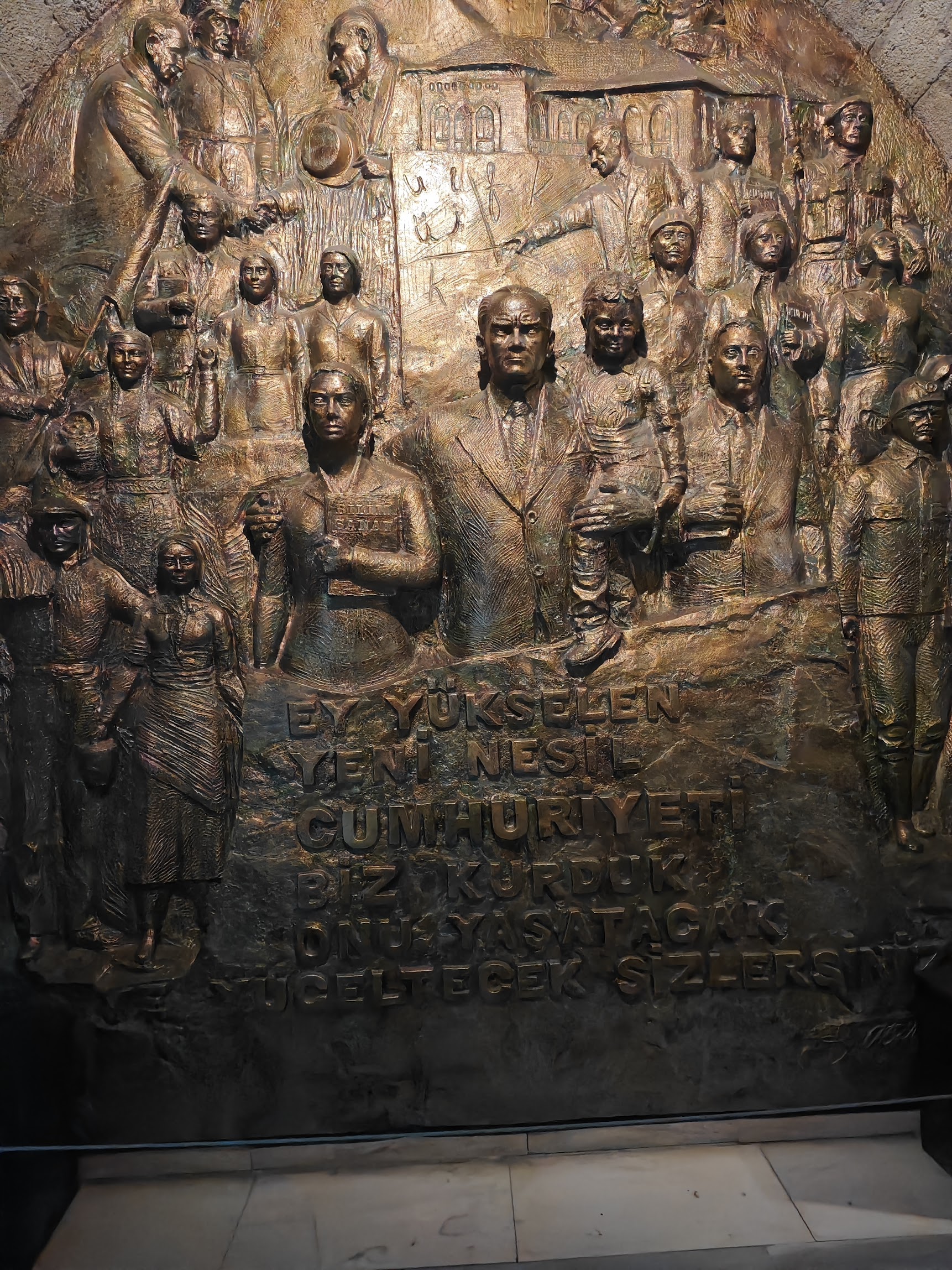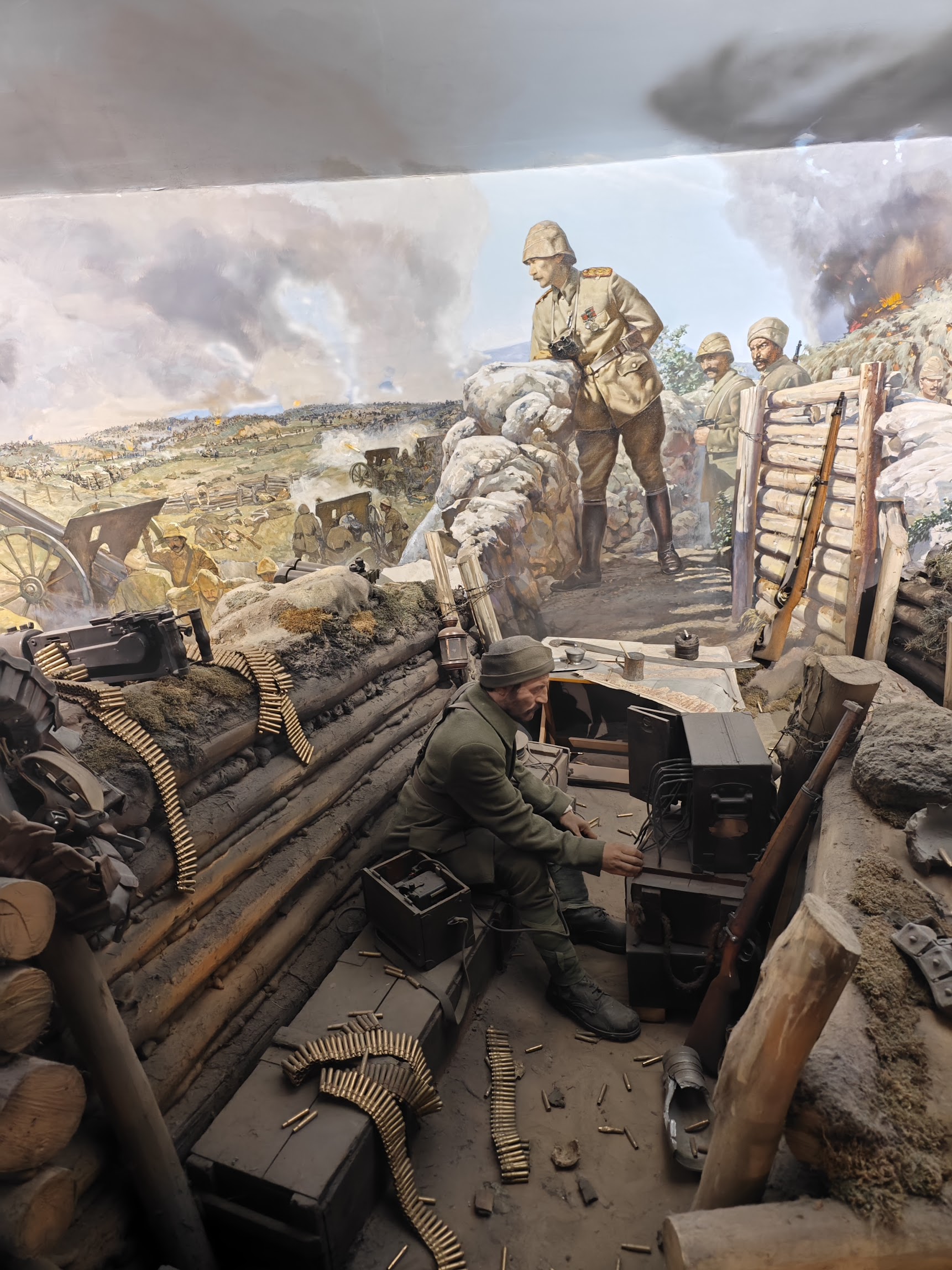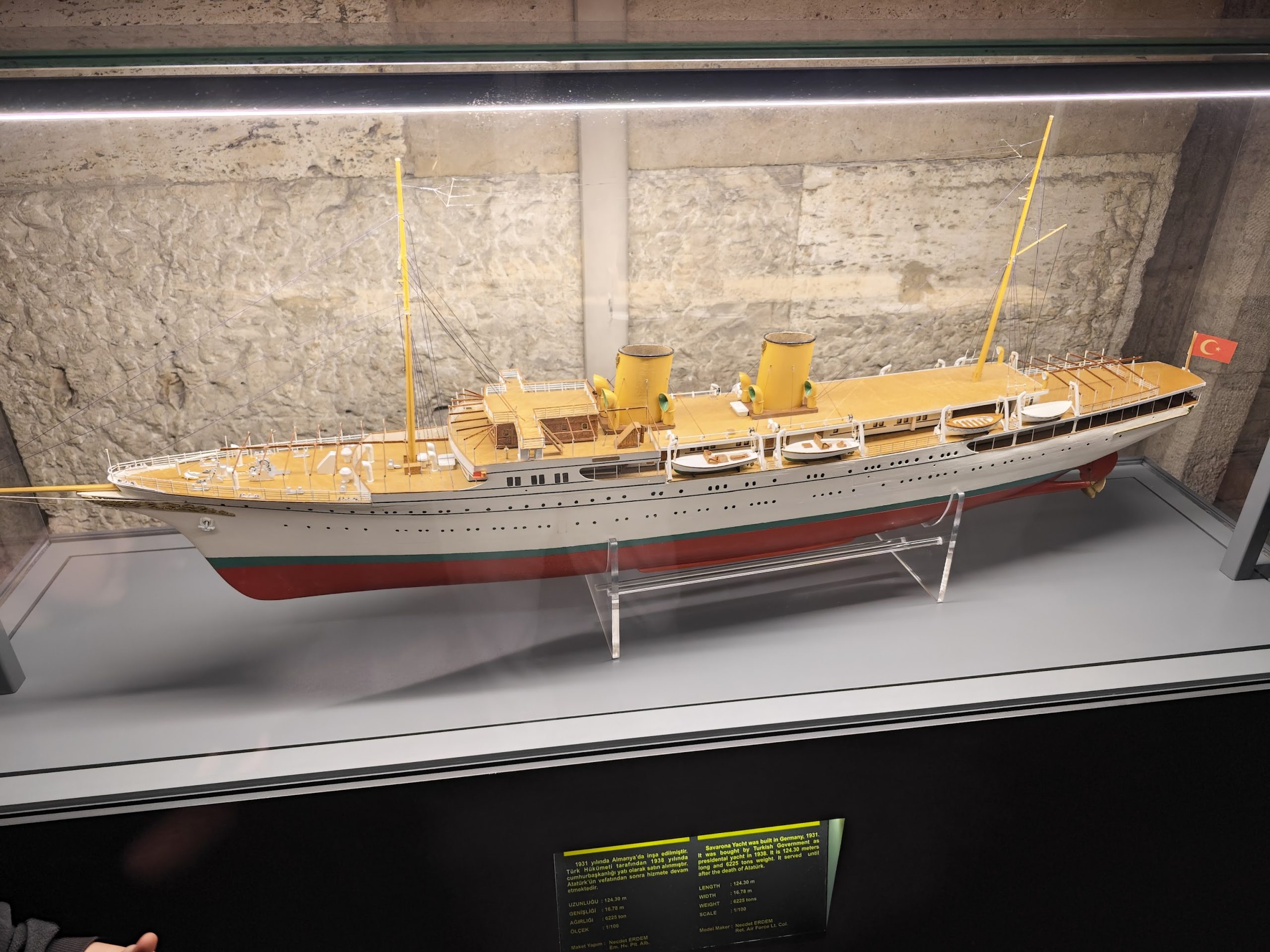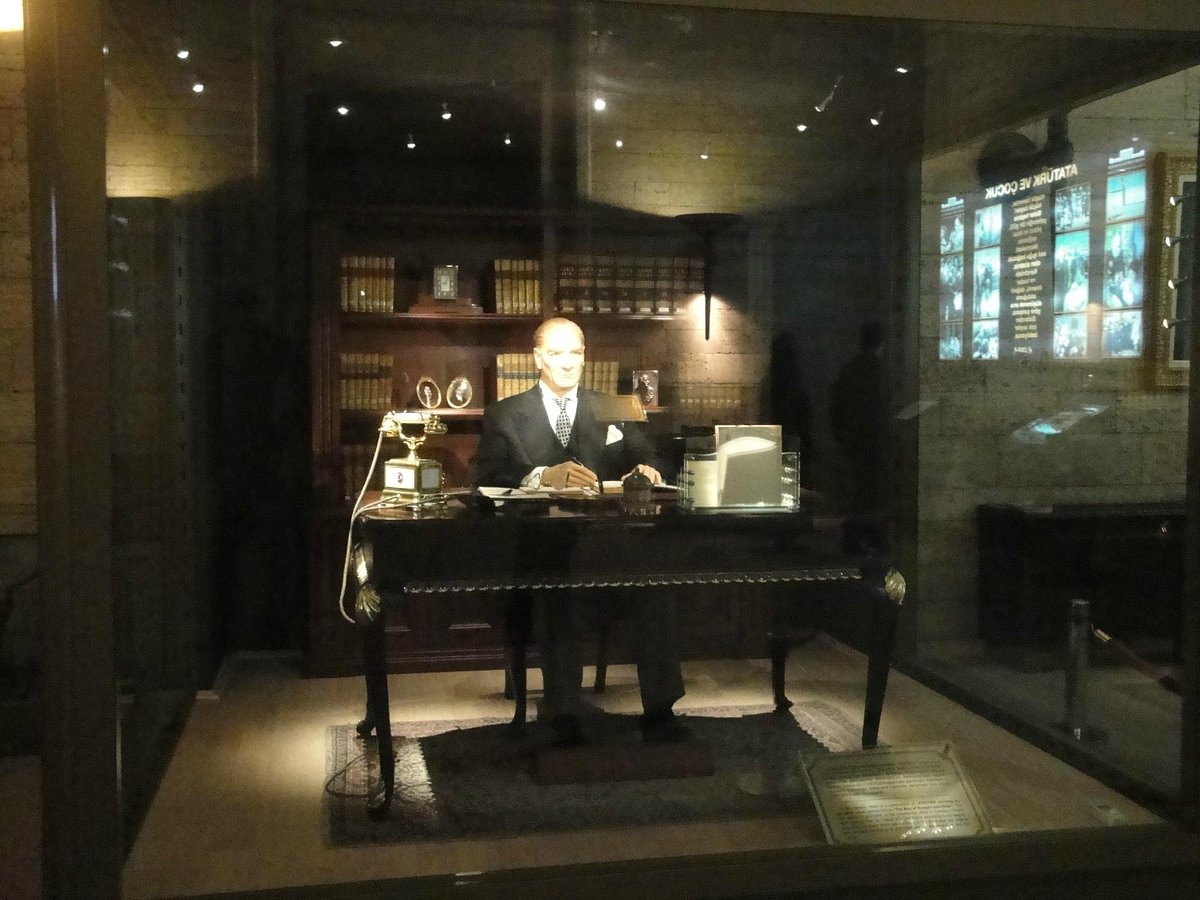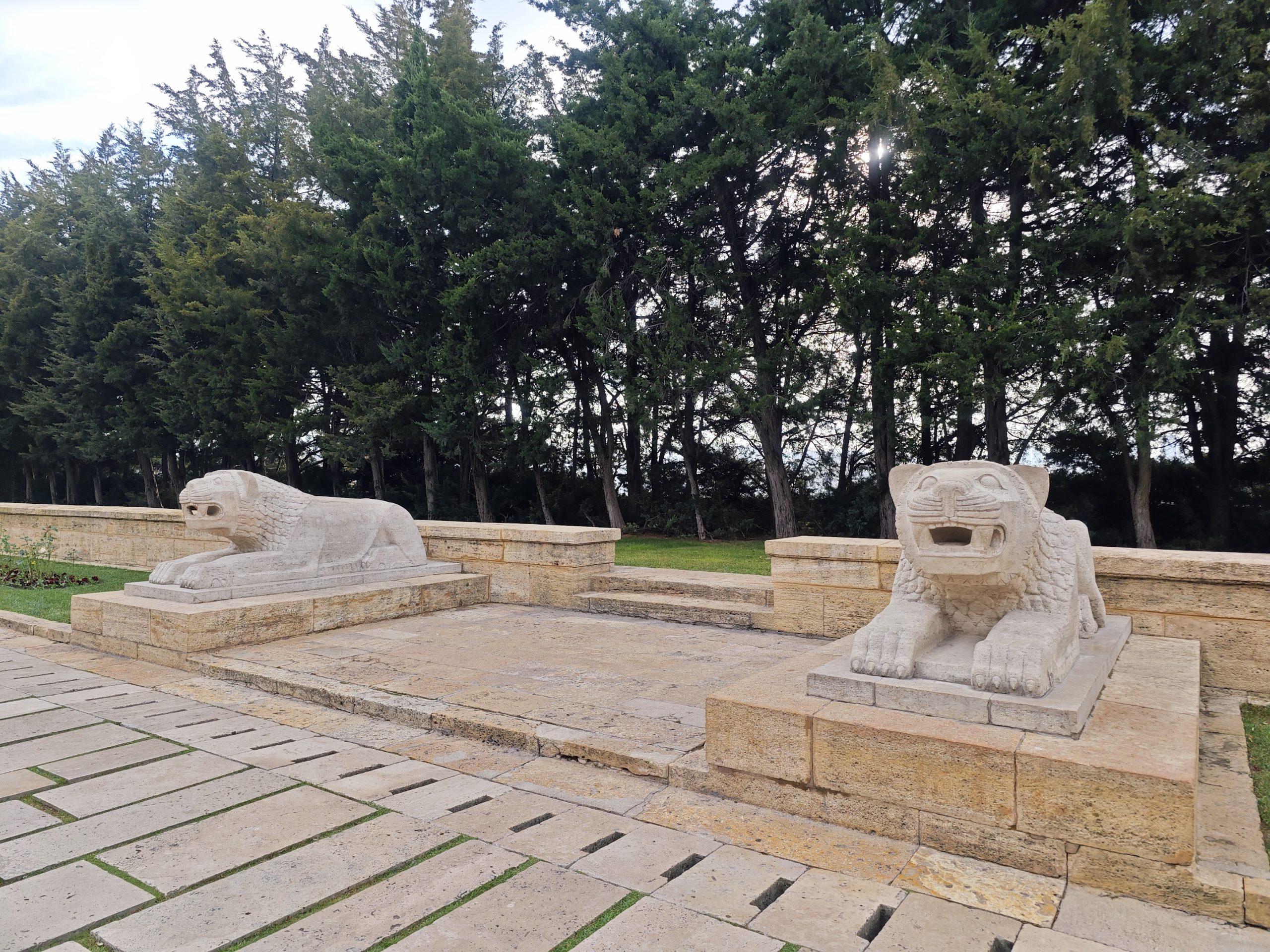Columned mausoleum of Mustafa Kemal Atatürk with its marble hall, towers and museum.
Anıtkabir is the complex located in the Çankaya district of Ankara and containing the mausoleum of Mustafa Kemal Atatürk. The construction of Anıtkabir, designed by Emin Onat and Orhan Arda, started in 1944 and was completed in 1953. It consists of various structures and monuments, especially the mausoleum building, as well as a wooded area called Peace Park.
The general architecture of Anıtkabir bears the characteristics of the Second National Architectural Movement period between 1940 and 1950. Islamic and Ottoman architectures were not consciously preferred in the architecture of the complex. Referring to the ancient roots of Anatolia, the architects took the Mausoleum of Halicarnassus as an example in the project. The composition of both buildings basically consists of columns surrounding the main mass in the form of a rectangular prism. Stating that this classical style is repeated in Anıtkabir, Doğan Kuban states that “The Halicarnassus Mausoleum was taken as an example due to the desire to protect Anatolia.” American architectural history researcher Christopher Wilson writes that with the removal of the roof of the mausoleum section from the project, this structure became “a simple and abstract main building with columns, resembling a Hellenic temple on top of the acropolis.” The lion statues on the Road of Lions are among the symbols used by the Hittites who ruled in Anatolia.



